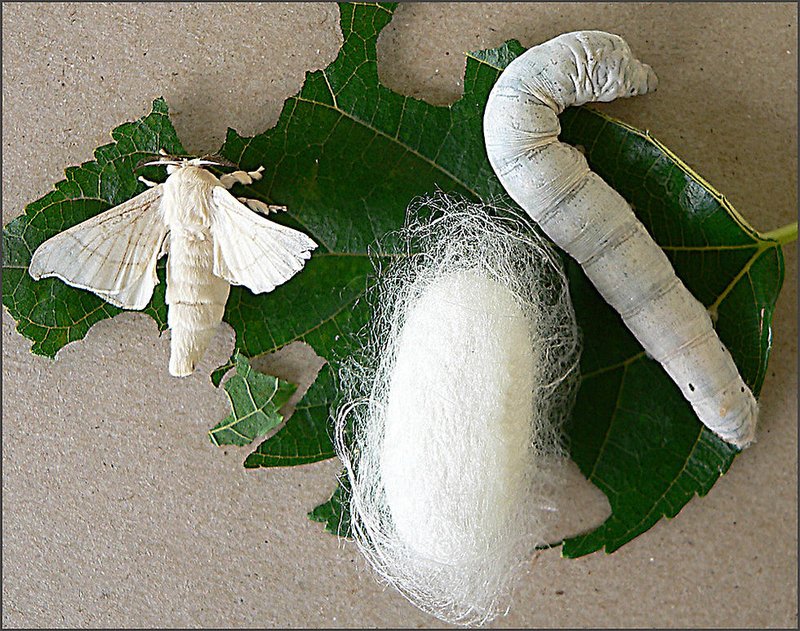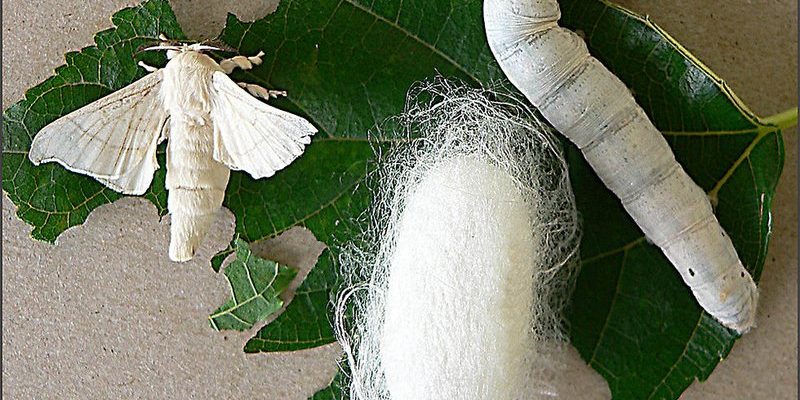
Think of it this way: spinning a cocoon is like preparing for a grand performance. The silkworm goes through various stages, each crucial for the final product. By the end of this process, they emerge as something entirely new—a moth! So, grab a cozy drink, and let’s unravel the fascinating journey of how silkworms spin cocoons.
The Life Cycle of the Silkworm
To fully appreciate how silkworms spin cocoons, it’s essential to understand their life cycle. Silkworms start as tiny eggs laid by adult female moths. These eggs hatch into larvae after a few weeks, and that’s when the magic begins. As they grow, they munch on leaves voraciously.
This larval stage can be thought of as a “teenage phase,” where they’re all about growth and energy. They can consume around 20,000 times their body weight in just a few weeks! You might be wondering why they eat so much. Well, this massive intake of nutrients prepares them for the next big step: spinning that cocoon.
After about 30 to 40 days, the silkworms are ready to enter the **pupal stage**. It’s their time to hide away and transform. But how do they do it? That’s where the spinning process comes in.
As the silkworms get ready to spin their cocoons, they seek a quiet, safe spot. Think of it as their personal dressing room. They stop eating and start to search for a suitable place. This could be anywhere—inside a nest, on a branch, or even in an artificial environment set up by farmers.
During this time, the silkworm’s body undergoes changes. They produce a special fluid called **sericin**, which will help bind the silk threads together. It’s kind of like glue for the silk strands. You might compare this to how artists prep their canvas before painting.
Once they find that perfect spot, it’s showtime. They’re about to create something beautiful.
Stage 2: Spinning the Silk Threads
Now comes the exciting part: the actual spinning. Using specialized glands in their mouths, silkworms begin to release the silk fibers. They do this by moving their heads in a figure-eight pattern, allowing the silk to unwind and form a protective layer around their bodies.
This spinning process takes about 2 to 3 days. Imagine a tiny factory producing silk while the world goes on outside, completely unaware. Each silkworm can produce around 1,000 to 3,000 feet of silk thread! That’s enough to make multiple silk garments.
As they work their magic, the silk hardens and forms the cocoon. This protective layer will shelter the silkworm as it undergoes its transformation. Talk about a cozy little home!
Stage 3: The Cocoon Formation
Once the silkworm has finished spinning, it settles into its snug cocoon. At this point, the cocoon is a beautiful, delicate structure—almost like a ball of yarn crafted by nature itself. It’s not just a pretty sight; it’s a vital part of their transformation.
Inside this cocoon, the silkworm undergoes metamorphosis. Over the next few weeks, it will change from a larva into a pupa and eventually into an adult moth. This stage is crucial for the development of the silkworm.
While it might feel like nothing is happening from the outside, a lot of action is taking place inside the cocoon. It’s like the silkworm is preparing for its grand debut!
Stage 4: The Emergence
After a period of transformation, the adult moth eventually emerges from the cocoon. This is where the silkworm’s journey comes full circle. The moth breaks free by secreting an enzyme that softens the cocoon.
You might think of this moment like a butterfly breaking free from its chrysalis; it’s a big deal! After spending weeks as a pupa, the adult moth has to dry its wings and prepare for flight. Once ready, it will fly off to mate and lay eggs, continuing the cycle.
However, most of the time, the beautiful cocoons are harvested before the moths emerge to avoid damaging the silk. This brings a whole new layer to the story, as silk becomes a sought-after textile.
The Importance of Silkworm Cocoons
Silkworm cocoons aren’t just important for the moths; they play a significant role in our lives. **Silk is a luxurious material** used in clothing, accessories, and even home décor. The soft, shiny fabric is often associated with elegance and quality.
In many cultures, silk has historical significance, representing wealth and status. For example, in ancient China, silk was so valuable that it became a form of currency! Today, silk still holds its status, and the process of harvesting it is delicate and intricate.
Many farmers rely on silkworms for their livelihood, cultivating them and caring for them to produce this beautiful fiber. It’s a fantastic example of how nature works in harmony with human needs.
Challenges in Silk Production
While the process of how silkworms spin cocoons is awe-inspiring, there are challenges involved. Climate change, pests, and diseases can affect silkworm populations and production. Farmers face ongoing challenges in maintaining healthy silkworms.
Additionally, the labor-intensive process of silk production can be demanding. Farmers must ensure optimal conditions for the silkworms to thrive, from proper diets to suitable environments. This delicate balance is crucial in maintaining silk quality and quantity.
You might also find yourself pondering the ethical implications of harvesting silk. As we enjoy the luxurious product, it’s essential to consider how we can support sustainable practices in silk farming.
Understanding how silkworms spin cocoons offers a glimpse into the wonders of nature and its interconnectedness with our lives. From their humble beginnings as eggs to their transformation into adult moths, each stage of their journey is fascinating and vital for the silk we cherish.
Next time you feel the luxurious touch of silk, remember the incredible story behind it. These unassuming little creatures are more than just pests; they are nature’s textile engineers, playing an essential role in the fabric of our lives. Let’s appreciate the journey they undertake to bring us the beauty of silk!

